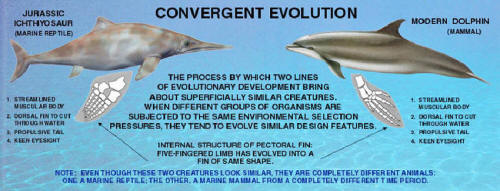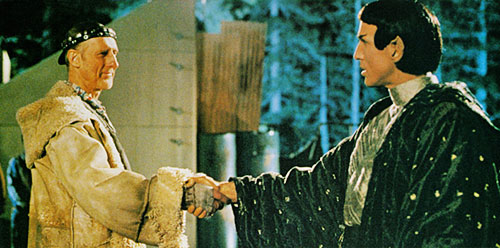|
by George Dvorsky from io9 Website
We have yet to make contact with an extraterrestrial intelligence, making it exceedingly difficult for us to imagine what an alien civilization might be like. But that doesnít mean we canít make some educated guesses.
Hereís what we know - and donít know - about aliens.
Right at the outset I have to make it clear that this exercise is purely speculative. Weíve never met an extraterrestrial intelligence (ETI), nor can we even be certain they exist.
Full of StarsWhen we look into space, we see a seemingly rational and biophilic universe ruled by predictable laws - and itís absolutely bursting with stars.
Our galaxy alone hosts 400 billion of them. If we consider the entire visible universe itself, which may host upwards of 170 billion galaxies, there could be as many as one septillion stars.
Thatís a number with twenty-four zeros behind it (1024). Considering those figures, it would be improbable to the point of ludicrousness to suggest that weíre the only technological civilization across both space and time. Indeed, the universe may have started churning out intelligent civs as long as 5 billion years ago.
But thereís more to this exercise than just looking in awe at a star-filled universe that may or may not be friendly towards life. We have one very important data point to look at: Our own civilization.
But itís here where we have to apply some philosophical thinking.
Self-Sampling
When we try to make predictions or inferences about something or someone we know nothing about, philosophers sometimes recommend that we take a close look at ourselves and our immediate situation.
This is what's called the self-sampling assumption - a Copernicanesque notion of mediocrity which suggests that weíre not special in the large scheme of things, and if anything, weíre probably quite typical.
The futuristic skyline of Pudong, ChinaVia
When speculating about ETIs, therefore, it might be helpful to use the entirety of the human experience as the "self" in order to draw conclusions about what aliens might be like.
We should use the self-sampling assumption, therefore, to look at our own historical development and then chart out the most likely characteristics of a hypothetical (and unknown) subset of ETIs. These developmental tendencies may not be common to all alien civilizations, but they may be common to a significant portion of them.
This is not as outlandish as it may appear. The laws of physics are the same across the entire universe. Consequently, all ETIs must operate in accordance to the same laws.
Alien civs may strongly resemble our own, both in terms of their physical/psychosocial characteristics and their civilizational traits and tendencies.
Convergent Evolution
For example, Fermilab physicist Don Lincoln, author of the recently released Alien Universe - Extraterrestrial Life in Our Minds and in the Cosmos, argues that intelligent life is likely to arise from similar environmental, chemical, and evolutionary processes as humanity.
Lincoln points to carbon-based life on Earth - which he says is not an accident or some kind of intergalactic anomaly. Carbon atoms can handle four chemical bonds, unlike single-bonding hydrogen atoms. But itís relatively easy to swap those bonds around.
Itís also very unlikely, says Lincoln, that technically advanced civilizations like ours could have developed on a planet without land masses, like a so-called water world.
He believes it's unlikely that intelligent dolphins will ever develop the technology for spaceflight.
Indeed, to get to our level of development, a species would probably have to be terrestrial. And if itís terrestrial, it would likely have to face the same sort of evolutionary pressures that our ancestors did.
That doesnít mean, of course, that all intelligent civs are descended from primates.
But they may all take similar paths on their evolutionary journey, a well-documented phenomenon evolutionary biologists refer to as convergent evolution - those cases in which organisms not closely related independently acquire some characteristic or characteristics in common; mutation in evolution may be random, but selection is not.
Examples include physical traits that have evolved independently (e.g. the eye), ecological niches (e.g. pack predators), and even scientific and technological innovations (e.g. language, writing, mathematics, the domestication of plants and animals, and basic tools and weapons).
Looking off-world, itís not unreasonable to think about similar examples of convergent evolution; there may be certain ecological and sociological niches that are not Earth-specific or human-specific and are archetypal throughout the universe.
Sure, this smacks of determinism - but hey, physics is the ultimate arbiters of all things.
Simon Conway Morris, in his book, Inevitable Humans in a Lonely Universe, describes life's "eerie" ability to repeatedly navigate to a single solution.
Morris clearly subscribes to the Rare Earth Hypothesis, the suggestion that the conditions for life on this planet are excruciatingly precise and difficult to replicate elsewhere.
Personally, I donít necessarily disagree that life on Earth arose from a perfect storm of conditions, but I do take exception to the idea that life is still rare across the cosmos.
Even if weíre one in a million - or hell, one in a billion - there should still be countless technological civilizations throughout the universe.
And the ones that do make it may look eerily familiar to us.
So What Do We Know About ET?
So if we take all these assumptions and methodologies into account, what do we really know about alien civilizations?
Based on our own experience we can start to make some really, really broad brush strokes.
First, we can assume that a certain subset of technological civilizations go through similar developmental states, including stone age and agrarian culture, industrialization, globalization (cultural, economic, and political - and in that order), and an information age.
Unfortunately, we canít extrapolate beyond that because we ourselves have not progressed into the next phase, whatever that may be. And in fact, owing to the threat of existential risks like artificial superintelligence and molecular assembling nanotechnology (just to name a few), there may not even be a next phase.
Sadly, we canít even make the
assumption that advanced ETIs engage in space travel and
interstellar colonization; we have yet to see any evidence of this,
so we canít extrapolate that far - a repugnant conclusion derived
from the infamous
Fermi Paradox. On a similar note, we can theorize about the presence of developmental mechanisms that constrain and give directionality to the evolution of organisms and society itself.
This idea, that of the "mega-trajectory," was proposed by A.H. Knoll and R.K. Bambach in their 2000 collaboration, "Directionality in the History of Life."
They argued on behalf of a middle road that encompasses both contingent and convergent features of biological evolution - one that may be attainable through the idea of the mega-trajectory:
According to Knoll and Bambach, the six mega-trajectories outlined by biological evolution thus far are:
Interestingly, cosmologists Milan Ćirković and Robert J. Bradbury took the megatrajectory idea one step further by speculating about a seventh megatrajectory:
Similarly, historian of science Steven J. Dick, in his 2003 paper "Cultural Evolution, the Postbiological Universe and SETI," posited a central concept of cultural evolution he called the Intelligence Principle:
Dick made the case that broad speculations about the developmental tendencies of advanced civilizations could be made through the application of this principle.
Alien Tech and Exopolitics
Which leads nicely to the next point:
There may in fact be some universal technological archetypes and scientific breakthroughs that are common to alien civs, including the rough chronological order in which these advancements are developed.
For example, modern cosmology cannot arise before the advent of telescopes. Similarly, microbiology canít progress without the development of microscopes. Scientific advancements also piggyback off each other.
For example, Newtonian dynamics had to precede Einsteinian Relativity, and neo-Darwinianism was fused from traditional Darwinism and Mendelian genetics.
(Star Trek: First Contact)
It may even be possible for us to speculate the existence of common cultural and meta-ethical characteristics of advanced societies, namely the notion that technological societies independently reach the same conclusions about ethics, morality, and social imperatives.
This last point is perhaps the trickiest of all seeing as weíre far from consensus here on Earth, not to mention the problem of social constructivism (the idea that groups construct knowledge for one another, and that the natural world has a small or non-existent role in the construction of knowledge, including science).
The jury is still out on which political system is the "best" or most effective - or if any single political system will ever "win out" in the end. If there even is such a thing. Here on Earth thereís a tension between democracy, authoritarianism, capitalism, and collectivism. Perhaps alien civilizations experiment with these concepts, too.
Or more conceptually, itís conceivable that the smooth governance of intelligent and (mostly) autonomous agents pass certain thresholds (both in terms of size and sophistication) that necessitate political paradigm shifts.
These shifts may be common to all (or most) civilizations across the cosmos. As an example, our civilization shifted from monarchism/authoritarianism to democracies just prior to (and during) to the onset of the industrial revolution.
As an aside, ants also undergo these sorts of paradigmatic changes - and biologists have compared the scaling of these networks to human institutions.
Caveats Galore
Again, this is highly speculative, theoretical stuff. Aside from our little old selves, we have no empirical evidence to back any of these claims.
Itís possible, for example, that we are in fact the only ones around, and that we somehow pierced through 'The Great Filter'. Itís also possible that many of the assumptions I presented here are false.
Maybe weíre the anomaly when it comes to technological civilizations (which would violate the self-sampling assumption), or that thereís a plurality of alien-types (both in terms of biological/morphological makeup and civilizational types) that far exceeds our imagination - and the limits of our current science.
And as noted, we cannot extrapolate beyond our current state of technological and social development when making inferences about ETIs.
But with each advancing step we take, we should assume that extraterrestrials, both past and present, have gone through similar stages.
|




